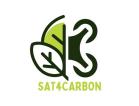SIMBAV Operational Group: Agro-Poultry Symbiosis. Towards modernizing the sector through digitalization and circular economy strategies.
- Type Operational group
- Status In progress
- Execution 2024 -2027
- Assigned Budget 595.550,57 €
- Scope Supraautonómico
- Autonomous community Castilla y León; Galicia
- Main source of financing CAP 2023-2027
- Project website GO SIMBAV
In Spain, meat production linked to the poultry sector has increased by more than 10% for chicken and more than 50% for turkey from 2011 to 2021, making Spain the second largest producer of chicken meat and the fifth largest producer of turkey meat in the European Union in 2021. This growth is closely linked to an increase in the amount of manure mixed with animal bedding materials that is generated, by-products known as chicken manure or turkey manure.
The solutions proposed in SIMBAV can contribute to progress in the development and application of the sector's measures, included in the Specific Guidelines for MTDS for poultry farming (MAPA, 2023) and which affect all relevant environmental aspects of the activity, including water and energy consumption, efficient manure management and control of its emissions.
The sector demands actions aimed at improving operating margins by optimizing costs derived from energy and feed consumption, without compromising animal welfare. Consequently, this project focuses on modernizing and improving the competitiveness of the poultry sector through a strategy based on the efficient management of its resources through the use of digitalization tools that allow for monitoring energy efficiency and animal welfare.
- Act. 1.
- R1. Design and implementation of advanced sensing system.
- R2.: Improvement of the poultry manure drying process.
- R3.: Pretreatment of materials.
- R4.: Study of main sources of water consumption.
- R5.: % of the farm's energy demand covered by thermochemical valorization of by-products.
- R6.: Evaluation of nutrient solubility in ash for the preparation of regulated liquid fertilizers.
- R7: Environmental impact analysis.
- Act. 2.
- R1. Design and implementation of an industrial IoT communication system.
- R2.: Improving the combustion of chicken manure: co-combustion with agricultural waste.
- R3.: Physicochemical and thermogravimetric characterization.
- R4.: Proposal for water saving alternatives and installations.
- R5: Analysis of the plant's energy performance. Recoverable waste heat sources.
- R6.: Agronomic trials.
- R7: Technical-economic analysis.
- Act. 3.
- R1. Design and implementation of a database.
- R2: Analysis of generated gaseous emissions and comparison with unmixed emissions. Assessment of the need for cleaning systems.
- R3.: Gasification of chicken manure/sow manure alone with air.
- R4.: Installation of the selected improvements.
- R5.: Analysis of the use of residual heat.
- Act. 4.
- R1. Massive data analytics and implementation of predictive algorithms.
- R2.: Definition and implementation of emission control systems.
- R3.: Co-gasification with agricultural waste.
- R4.: Measurement of water savings and room for improvement.
- Act. 5.
- R1. Industrial virtualization of animal welfare and energy flows.
In Spain, poultry meat production increased by more than 10% from 2011 to 2021 for chicken and more than 50% for turkey, making it the second-largest producer of chicken meat and the fifth-largest producer of turkey meat in the European Union in 2021. This growth is closely linked to an increase in the amount of manure mixed with animal bedding, a by-product known as chicken manure or turkey manure. Therefore, harnessing the by-products generated in this activity for the benefit of the sector's own producers is becoming necessary due to the environmental and economic challenges it entails and the potential it presents.
Given the importance of this sector to the global economy, and to Spain in particular, and the growing volume of species raised on poultry farms, the European Food Safety Authority (EFSA), based on European Commission animal welfare standards, recommended reducing the stocking density of conventional broiler chickens to a maximum of 11 kg/m2, which would significantly reduce the profitability of this type of farm.
To counter the imposition of these limitations on the number of kilograms produced for a given area, the sector is demanding actions aimed at improving operating margins by optimizing costs derived from energy and feed consumption, without compromising animal welfare.
On the other hand, the improvement of environmental performance, in addition to social, economic and industrial performance, is identified by national and European public policies such as the National Strategic Plan of the Common Agricultural Policy (CAP) or the Spanish Strategy for Science, Technology and Innovation 2021-2027, which specifically includes the importance of both issues in its main objectives 3 and 6 and, in addition, identifies the smart and sustainable agri-food chain as one of its strategic lines.
However, uncertainty in the sector about the technical requirements or economic implications of implementing sustainable strategies is often a barrier to the introduction of innovative technologies.
Promote the modernization and improved competitiveness of the poultry sector through a strategy based on the efficient management of its resources through the use of digitalization tools that allow for monitoring energy efficiency and animal welfare, the achievement of circular economy and energy symbiosis actions that will help reduce energy and water consumption, and the energy utilization of biowaste generated on-farm and at nearby farms.
- R1. Reduction in the number of deaths by at least 1% by optimizing existing energy consumption.
- R2. Recovery of at least 50% of the thermal energy from biofuels by optimizing the combustion system for use in the poultry sector.
- R3. Recovery of at least 70% of the thermal energy from biofuels by optimizing the gasification process.
- R4. Reduction of between 20-50% in the farm's network water consumption.
- R5. Evaluation of the % savings in overall energy costs with the solution proposed in the project.
- R6. Reduction of at least 60% of inorganic fertilizers to be applied to specific crops.
- R7. Determination of the environmental profile and technical-economic viability of implementing digitalization and circular economy actions.
- Coordinator/entity name: Galician University Business Foundation (FEUGA)
- Postal address: Galician University Business Foundation (FEUGA), R/Lope Gómez de Marzoa S/N - Campus Vida, Santiago de Compostela, A Coruña
- Coordinator/entity email: l.carbia@feuga.es
- Telephone: +34 981534180
Royal Legislative Decree 1/2016 establishes the priority of preventing or, when this is not possible, reducing and controlling air, water, and soil pollution through an integrated pollution control system. Specifically, for incineration infrastructure, Royal Decree 815/2013 establishes the technical and legal requirements for its authorization and operation. Furthermore, one of the main objectives of Royal Decree-Law 1/2016 and the Directive 96/61/EC from which it arises is to guarantee the integrated prevention and control of pollution from facilities through the application of the best available techniques (BATs) included in the reference documents (BREFs) approved for each sector by the European Commission.
- Fundación Empresa Universidad Gallega (FEUGA)
- Fundación Empresa Universidad Gallega (FEUGA)
- Yarima Torreiro Villarino
- Manuel José Dopico Dopico
- María del Pilar Bernal
- José Antonio García Blanco
- Raúl París de Pablo
- Félix del Villar
- Agustín de Prada Rodríguez







